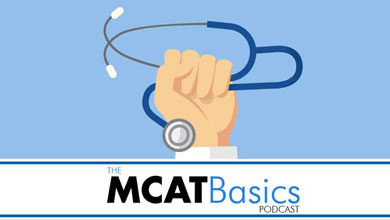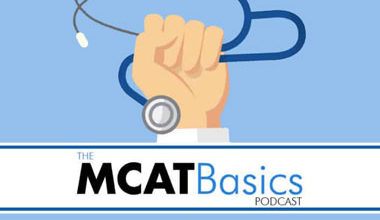Learn about the excretory system and prepare for the MCAT. Sam covers the excretory system’s anatomy and physiology.
Sam Smith breaks down information about the excretory system that will be useful for the MCAT. He first compares the functions of the excretory system versus the digestive and urinary systems. Then, he describes the anatomy of the excretory system. Finally, he details the physiology of the excretory system in terms of its various waste products.
[01:14] The Role of the Excretory System[03:32] The Kidney
[06:00] The Bladder
[07:17] The Liver
[10:54] The Skin
[12:35] The Lungs
[13:38] The Large Intestine
[17:21] Excreting Byproducts of Protein & Lipid Breakdown
[25:25] Excreting CO2
[26:26] Excreting Electrolytes
[29:31] Excreting Toxins in Drugs
The primary components of the excretory system include the kidney, the bladder, the liver, the skin, the lungs, and the large intestine. The kidneys are bean-shaped and located in your lower back. These contain functional units called nephrons which filter toxins, salt and water to produce urine. Urine travels from the kidney through the ureter into the bladder, where it is stored. The bladder is surrounded by a layer of muscle which helps to push out the urine. Urine flows from the bladder through the urethra out of your body.
The liver is a reddish-brown organ located just below your diaphragm. It contains small, hexagon-shaped functional units called hepatic lobules. At the corners of the hepatic lobules are the portal triads consisting of the portal veineal, portal arterial, and the bile duct. Blood travels from the veineals & arterials of the portal triad into the liver’s central vein through the sinusoids. Bile travels from hepatocytes in the liver into the bile duct.
The skin contains sweat glands. A sweat gland is made up of the coil and the hose. The coil is located in either the dermis or less often, the hypodermis. Sweat is secreted in the coil and travels through the hose to the pore on the surface of the skin. The lungs contain alveoli as their functional units. Alveoli excretes carbon dioxide from the body.
The large intestine which frames the small intestine, is covered more deeply in the digestive system episode. It consists of the secum, the colon and the rectum. The colon is the biggest part of the large intestine and consists of the ascending, transverse, descending, and sigmoid portions, stated in order of bowel movement.
In terms of physiology, the excretory system has several materials to excrete: 1. metabolic byproducts of protein and lipid breakdown, 2. electrolytes, 3. toxins in drugs and 4. waste gas. Starting with protein breakdown, the breakdown of amino acids results in the production of ammonia, NH3 which is toxic and must be excreted. Through the urea cycle, ammonia is converted into urea, and urea can be excreted in our urine. The urea cycle is complex, but we should remember three key points: 1. Glutamate and aspartate — both amino acids — are deaminated (their nitrogen is removed). 2. The removed nitrogen is fed into the urea cycle to produce urea, which is made up of two amines and one carbonyl carbon. 3. The urea cycle is a cycle which means that materials produced at the end are fed back into the cycle. For example, ornithine which is produced at the end of the cycle, is fed back and acts as one of the first reactants in the cycle. Nitrogen excretion is species-dependent. Mammals like us excrete urea (ureotelic), whilst fish excrete ammonia (ammonotelic) and birds/reptiles excrete uric acid (uricotelic).
For lipid breakdown, bile is key. Bile contains bile salts for emulsifying fats. But bile also contains a breakdown product called bilirubin. Bilirubin is an orange-yellow compound product of heme metabolism. Bile goes into the gallbladder for storage before it is released into the intestines. The intestines contain bacteria which metabolizes the bilirubin which is broken down into smaller molecules and excreted in faeces or reabsorbed into the blood and excreted by the kidneys in urine.
As for carbon dioxide excretion, carbon dioxide is absorbed into the alveoli from the blood and then excreted through exhalation. This is important to prevent the blood from becoming acidic due to the prevalence of carbonic acid. Electrolytes are excreted through urine, sweat and faeces. Most toxins and drugs are metabolized by cytochrome P-450 enzymes in the liver to produce water-soluble compounds. Once these compounds are metabolized, they can be dissolved in urine or bile. These metabolic processes occur in the smooth endoplasmic reticulum of hepatocytes.
Please email me if you have any comments or concerns: [email protected]

